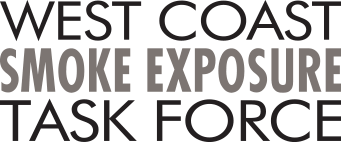Frequently Asked Questions
Wildfire Smoke Impacts
Wildfire smoke, especially during the later stages of grape development, can significantly impact the quality and marketability of winegrapes and the wines made from them. When grapes are exposed to smoke, compounds in the smoke can be absorbed through the skins. These compounds bind with sugars in the grapes and remain undetectable until fermentation, when they can break down and create undesirable smoky or ashy flavors in the wine.
The severity of smoke exposure depends on several factors, including intensity, duration, and timing. Testing for smoke compounds is still evolving, and growers must often make critical harvest decisions with limited data and under tight time constraints. As a result, both growers and wineries face difficult choices that can have substantial financial consequences. In 2020 alone, widespread wildfires led to an estimated 165,000–325,000 tons of California winegrapes, valued at over $600 million, going unharvested. That year’s fires resulted in total losses exceeding $3.5 billion for the California wine industry.
Funding research to improve smoke impact prediction, detection, and mitigation remains a top priority for the wine industry. The West Coast Smoke Exposure Task Force is committed to advancing this research, providing growers and wineries with critical resources, and working toward solutions that help protect vineyards and the wines they produce.
—
WCSETF has created an 11-page frequently asked questions document (11 pages, click link below) to compile current research knowledge and practical experience related to smoke exposure. It will be updated as new information becomes available.
Smoke Impacts: FAQs (WCSETF)
Categories in the FAQs include:
- Vineyard - Grape Growers
- Winery
- Crop Insurance
- Risk Assessment
For questions not answered in the FAQs, please contact us.

